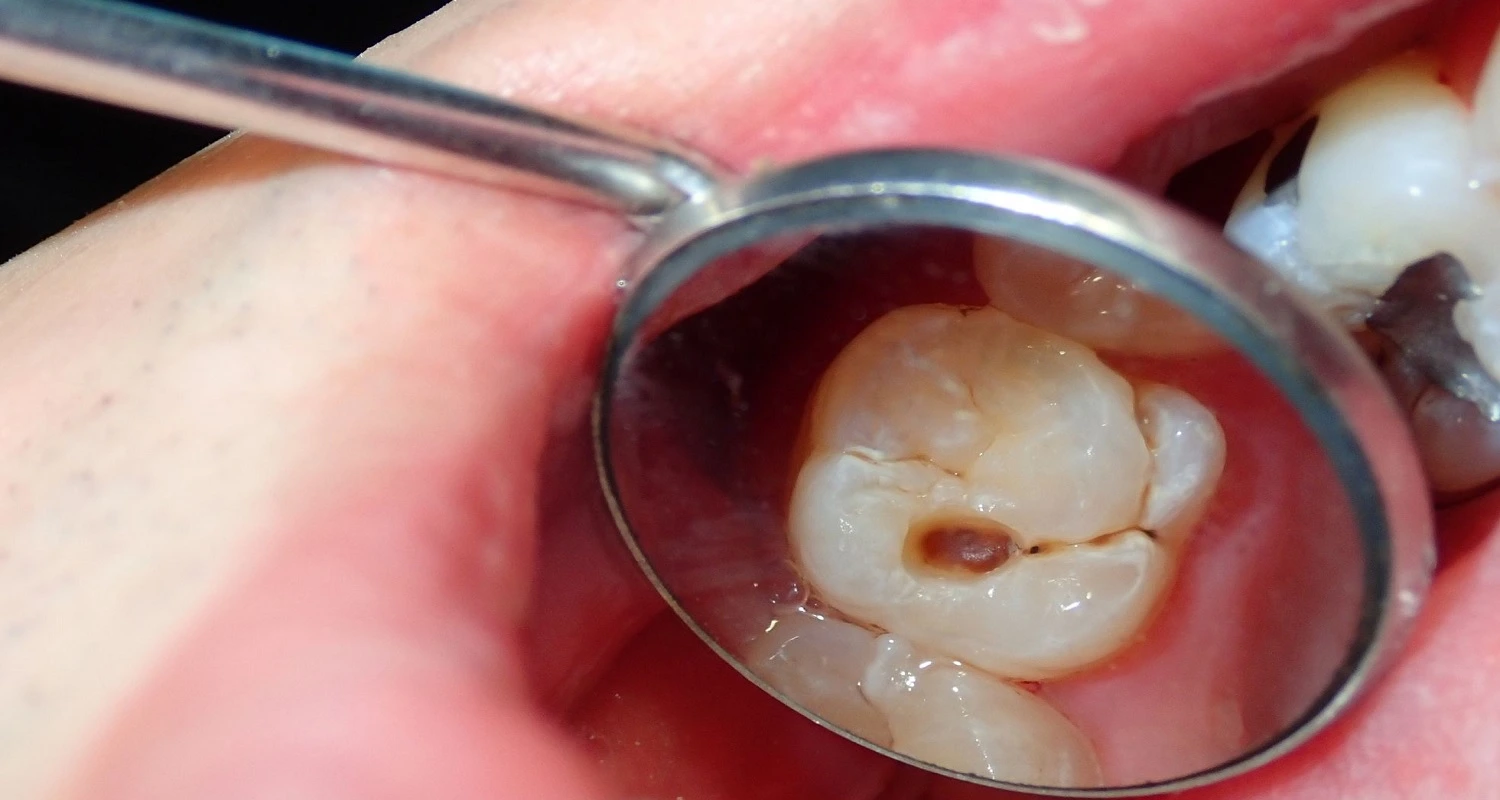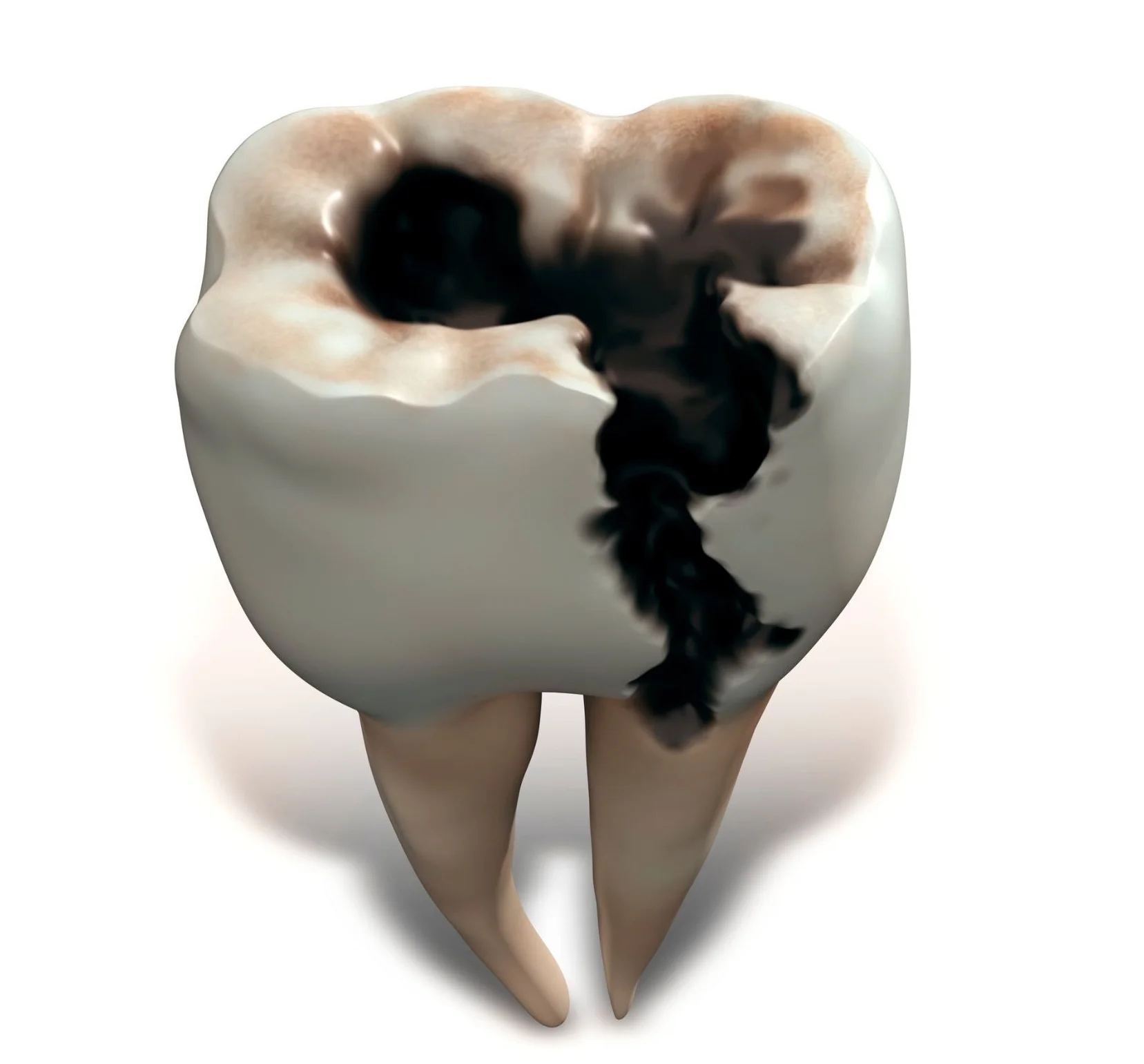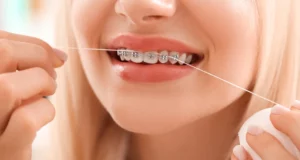Last Updated on: 15th October 2024, 08:36 am
✓ Fact Checked 🕓
❙ Our team of writers, editors, and medical experts rigorously evaluates each article to ensure the information is accurate and exclusively cites reputable sources.
❙ We regularly assess how the content in this article aligns with current scientific literature and expert recommendations in order to provide the most up-to-date research.
Decayed Wisdom Tooth: How to fix it?
The emergence of wisdom teeth can represent a nightmare for many people, but there is one scenario that can be much worse: having a rotten wisdom tooth. Sometimes, patients go to the emergency room with severe pain; the reason for the visit turns out to be something they did not expect: a wisdom tooth with cavities. In this article, we tell you everything you need to know about a decayed wisdom tooth and how to solve the problem.
What are Wisdom Teeth?
Wisdom teeth are the last teeth to appear in the mouth. They usually erupt between the ages of 18 and 25, although it can happen earlier or later. Sometimes, patients notice a rash due to the presence of intense pain. Other times, there is enough room in the mouth for wisdom teeth to fit, so it erupts without notice.
What is a Decayed Wisdom Tooth?
A tooth is said to be decayed or have cavities when it has holes or defects in its structure, generated by the presence of bacteria. When patients have poor oral hygiene, bacteria settle on tooth surfaces, feeding on the sugars in our diet and producing acids that damage enamel and dentin – the hard layers of the tooth. Once the hard part of the tooth has been degraded, the nerve or dental pulp is exposed, causing pain and infection.

Causes of Decayed Tooth
Many factors can contribute to the formation of cavities, including:
1. Excessive consumption of sugars and carbohydrates: These feed bacteria in the mouth, which produce acids that damage teeth.
2. Poor dental hygiene: Lack of brushing and insufficient flossing can allow dental plaque to build up on the teeth, encouraging the proliferation of bacteria.
3. Genetic factors: Some people may have a genetic predisposition to develop cavities more easily due to defects in tooth formation.
4. Hard-to-reach areas: Teeth or areas that are difficult to clean are prone to cavities. It happens when there is dental crowding or third molars located in a very posterior area of the mouth, where the brush cannot reach.
5. Dry mouth: Saliva plays an important role in protecting teeth by neutralizing acids and removing food debris. Producing too little or poor-quality saliva can facilitate the formation of cavities.
Home Remedies for a Decayed Wisdom Tooth
Intense pain generated by a decayed wisdom tooth works like an alarm that warns us of a cavity or infection. Definitively curing the pain of a decayed wisdom tooth always requires treatment by a dentist, so the cavities and infection can be eliminated. However, there are some tips to follow while scheduling an appointment with a professional. Try the following techniques to relieve dental pain:
● Try not to eat very cold or very hot foods.
● Apply a small amount of clove oil to the tooth.
● Use 2 or 3 pillows to elevate your head when sleeping.
● Take over-the-counter pain relievers.

Professional Treatment of Decayed Wisdom Tooth
Professional dental treatment is the most effective way to relieve the pain caused by a decayed wisdom tooth. Furthermore, it is important to receive timely treatment, since trying to relieve pain without solving the problem at its source can lead to severe infections that can compromise the general health and life of the patient.
Thus, depending on the depth and severity of the cavity, treatment could consist of the following:
1. Place a dental restoration
It is possible to solve tooth pain and sensitivity with restoration when it is not a deep cavity. If the decay has not yet affected the nerve of the tooth, materials can be placed to protect it and promote healing.
2. Perform a root canal treatment
If the cavity is so deep that it causes irreversible inflammation in the nerve or even necrosis, it is necessary to remove the dental pulp through a root canal treatment. The dentist will clean the inside of the tooth and seal it with a material that prevents the proliferation of bacteria. Root canal treatments are often complicated in wisdom teeth, due to their difficult-to-access location, so they will only be performed if the wisdom tooth has a chewing function.
3. Additional treatments
If there is a severe infection, it is likely that in addition to a root canal treatment or extraction, your doctor will prescribe medications such as antibiotics and anti-inflammatories to support the treatment. In cases where an abscess has already formed, a small incision may be required in the affected area to drain the pus. A tooth abscess can also be drained at home. Examine the article for guidance.
4. Extraction of a wisdom tooth
Your dentist will likely choose to remove the decayed wisdom tooth in the following cases:
● If the decay has destroyed most of the tooth structure, it is not possible to rebuild it.
● If the wisdom tooth is not in a good position or is affecting neighboring teeth.
● Yes, performing root canal treatment is very difficult due to its difficult-to-access location.
● If the wisdom tooth is not fulfilling a chewing function, that is, when it does not have a partner in the opposite jaw to be able to chew.

Prevent Decayed Teeth in the Future
Dental pain is a very unpleasant experience; it is always better to avoid it. To do so, we offer 4 ways to prevent cavities in wisdom teeth – and in any other tooth:
● Brush your teeth 3 times a day with fluoride toothpaste, making sure that the bristles of the brush remove all the plaque that is stuck to the teeth.
● Avoid snacking between meals; if you do, try to practice good hygiene after eating.
● Floss every night to remove plaque that builds up between your teeth. Don’t forget the molars.
● Visit your dentist every 6 months to perform a thorough examination and identify possible incipient cavities.
Conclusion
A decayed wisdom tooth is a painful and potentially serious condition that may require urgent dental care. Treating a decayed wisdom tooth usually involves placing a dental restoration, root canal treatment, or extraction, depending upon the severity of the cavity and its location. It is possible to prevent the appearance of cavities in wisdom teeth – and other teeth – by maintaining good hygiene and dental care habits.
Frequently Asked Questions
Does a decayed wisdom tooth cause pain?
Wisdom teeth may cause dental complications, such as dental congestion, impaction (where the tooth presses on the gum or an adjacent tooth). It may be the source of cavities and infections. These problems can result in pain, chewing problems, and halitosis.
Is it necessary to remove decayed wisdom teeth?
According to the American Dental Association, it may be necessary to remove the wisdom teeth if there are alterations in the area where they are located, including discomfort or pain, recurrent infections of the soft tissue located behind the last molar tooth, or the formation of sacs of fluid known as cysts.
How to identify an infection in my wisdom tooth?
The gums around the wisdom tooth show redness and swelling and inflammation occurs in the facial area. You experience pain and tenderness in the region. There is the presence of pus emanating from the gums.
What are the consequences of not removing severely damaged wisdom teeth?
Apart from cavities, the complexity of keeping wisdom teeth that have only partially erupted clean increases the possibility of suffering from an inflammatory and painful gum condition, known as pericoronitis. This condition can cause pain and swelling in the area of the affected tooth, jaw, or cheeks. It tends to recur if proper treatment is not given.
Share:
References
1. Cavities/tooth decay. (Mar 19, 2022). Mayo Clinic. https://www.mayoclinic.org/diseases-conditions/cavities/symptoms-causes/syc-20352892
2. Haghighi, A. S. (Jun 11, 2020).Tooth decay: Symptoms, causes, treatment, and prevention. Medicalnewstoday.com. https://www.medicalnewstoday.com/articles/tooth-decay
3. Burgess, L. (Mar 20, 2018). How to get rid of cavities: Home remedies and prevention. Medicalnewstoday.com. https://www.medicalnewstoday.com/articles/321259
4. Watson, S. (May 7, 2010). Cracked or broken tooth pain relief. Verywell Health. https://www.verywellhealth.com/toothache-relief-from-a-cracked-or-broken-tooth-1059317
5. Clemons, A., & D. (Dec 29, 2022). How to get rid of cavities: Do home remedies work? Cleveland Clinic. https://health.clevelandclinic.org/how-to-get-rid-of-cavities/
6. Higuera, V. (Nov 15, 2017).Tooth cavities. Healthline. https://www.healthline.com/find-care/articles/dentists/tooth-cavities
7. Seladi-Schulman, J. (Jul 30, 2020). Tooth decay stages: 5 stages and how to treat each. Healthline. https://www.healthline.com/health/dental-and-oral-health/tooth-decay-stages














